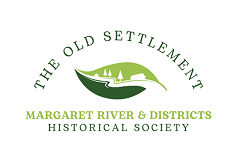
At some of the locations on this page you will find the Geocaching symbol which means that there is a Geocache hidden nearby.
Geocaching is a fun treasure hunting game for the whole family. Participants navigate to a specific set of GPS coordinates using a smartphone or a GPS device and then attempt to find a treasure hidden at that location. Finds can be logged online. Register a free account and start searching!
For more information visit the Geocaching website.
Margaret River Old Hospital
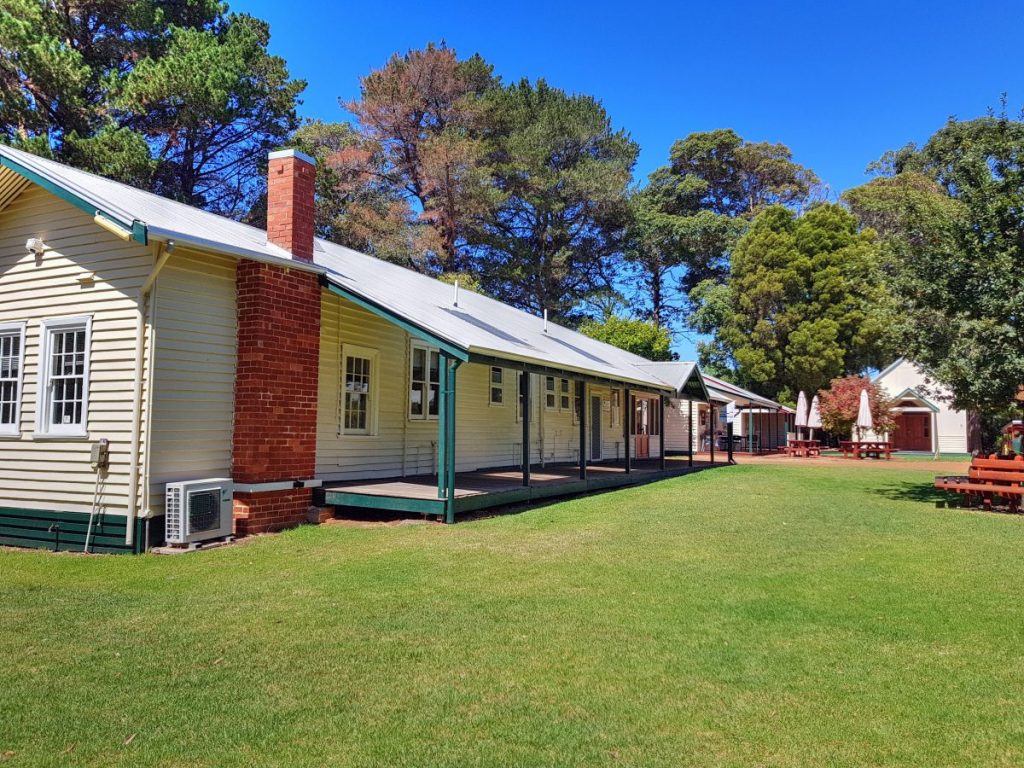
21-33 Tunbridge Street, Margaret River
In 1922, following the establishment of a group settlement in the Margaret River district, the local Progress Association approached the Health Department on the subject of securing a doctor for their district, as the nearest medical aid was Busselton. In order to facilitate this, a medical scheme was established whereby settlers contributed one shilling per week. Before a medical officer was appointed the local MLA, Mr Pickering, approached the Health Department to discuss a hospital for the district. The department agreed to provide a hospital on a pound for pound basis, but advised that first the district must establish a medical officer. In August 1923, Dr Rigby was appointed as District Medical Officer and not long after the Health Department had their principal architect draw up plans for a weatherboard cottage hospital. The estimate submitted by the architect was for ₤1100 and the building of the hospital was completed in May 1924.
In December 1929, additional nurses’ quarters was provided, a new dining room was added in the 1930s, as well as an extra bathroom for nurses, an operating theatre accommodation and sterilising facilities. These additions were funded by the Lotteries Commission, State Government and the community.
An important addition to the hospital occurred in 1929. This was the Margaret Cecil Rest House, which was built at the rear of the hospital. The rest house was named for Lady Alicia Cecil and her daughter, Margaret, who upon visiting the district found the facilities for pregnant women inadequate. When Lady Alicia and Margaret returned to England, Margaret sent out an appeal to the ‘Margarets of Britain’ to support a fund for a Rest House in Margaret River. In her letter she wrote: ….by voluntary effort these rest houses have been built in other Group Settlement centres. If the Margarets of England and Scotland would build the one in Margaret River, not only would it be the greatest help to the mothers, but it would be a tangible link of Empire which Australians would appreciate and it would make the families feel that those in the old country had not forgotten them. Money was also raised by card evenings and the sale of some of the water colours done by Margaret Cecil.
Trustees were appointed in the Margaret River district to oversee the building of the rest house and the expenditure of funds, and a committee of ladies was organised to raise funds and maintain the building. The house was furnished and fully equipped, linen, blankets were sent from England, as well as a complete monogrammed dinner set, books and a gramophone. Even during the war years Margaret Cecil (later Mrs Lane) sent food parcels for distribution, and continued her association with the Rest House until her death in 1963.
By the 1960s it was realised that a new hospital building was required. After much discussion between the government, the hospital, the shire and community groups – lasting nearly three decades – work finally commenced on the new hospital in 1989.
The Margaret River Community Resource Centre Inc. had its genesis in the Margaret River Community Resource Centre (Inc) at 1 Station Road, Margaret River. It was established in 1985 to service the region’s high proportion of pensioners, unemployed, single parents, children and community groups, the vast majority of whom are women. However it soon became apparent that the resources were inadequate to meet the needs of one of the fastest growing areas of Western Australia. A group of 40 people, including representatives of the community resource centre and 12 other community groups, formed the resource centre in January 1990 with the purpose of obtaining and maintaining the soon to be vacated old hospital site in Tunbridge St, for community purposes. After much negotiation with various government bodies the old hospital site was secured under a vesting order to the Augusta/Margaret River Shire for community purposes on 7 February 1991. The resource centre in fact began leasing the site from the interim responsible body – the South West Development Authority – on 1 September 1990. On 26 June 1991 the community resource centre and the resource centre were amalgamated. The new resource centre rents the site from the Shire Council.
For more information about this place visit the Margaret River Community Centre website
Steam Locomotive Kate
Kate is a 0-4-0WT locomotive constructed for a timber tramway by Leeds company Thomas Green & Son as their builder's number 132 of 1889.
‘Kate’ is a steam locomotive imported to Western Australia in 1890 by MC Davies and named after his daughter, Katherine. The 8-ton locomotive was built in Leeds by T F Green and Sons and was used for the Karridale timber industry. The children of Karridale school were given a school holiday when the locomotive arrived at Hamelin Jetty to be unloaded and begin her working life.
‘Kate’ worked at various mills at Karridale, Jarrahdale and Marrinup. In March 1917 she was sold by Millars Ltd to the PWD and was then used at Wyndham until retired in 1962.
In 1963 the Margaret River Rotary Club bought ‘Kate’ and placed her in Rotary Park, at the town’s entrance, as a tourist attraction in 1964.
‘Kate’s’ loading and shipping by state ship from Wyndham to Fremantle was supervised by Fred Mcleod, who later became a resident in Augusta. Mr Jim Archibald of Margaret River assisted in the transportation from Fremantle to Margaret River.
‘Kate’ was cosmetically restored at Boyanup in 2001, including removal of asbestos boiler lagging, and returned to Margaret River on 25 August 2001.
Margaret River Hotel
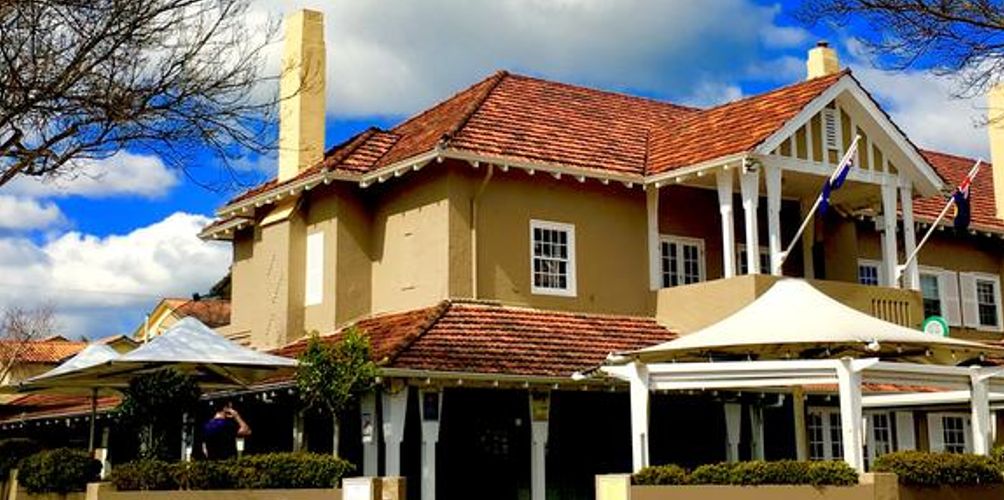
125 Bussell Hwy, Margaret River
Bernard McKeown, the original owner and manager of the Margaret River Hotel, purchased lots 17 to 20, building the hotel on 19 and 20. McKeown’s wife Sarah, and family helped him run the hotel, which was officially opened on 11 April 1936.
As the Hotel was built prior to electricity being supplied to the town, the hotel originally ran from a semi-diesel powered generator. Cool drinks for the hotel and for retail sale were made in the hotel yard, where a small aerated water plant was housed in a shed. There was also a hotel truck, which would meet guests at the railway station and transport them to the hotel.
In 1985, seven new motel units and extensions were built and the whole building was rendered. More modifications and renovations were undertaken in 2001/2002. As at 2012, the place is still a Hotel and is a landmark in the main street of Margaret River.
International Trading Company Store
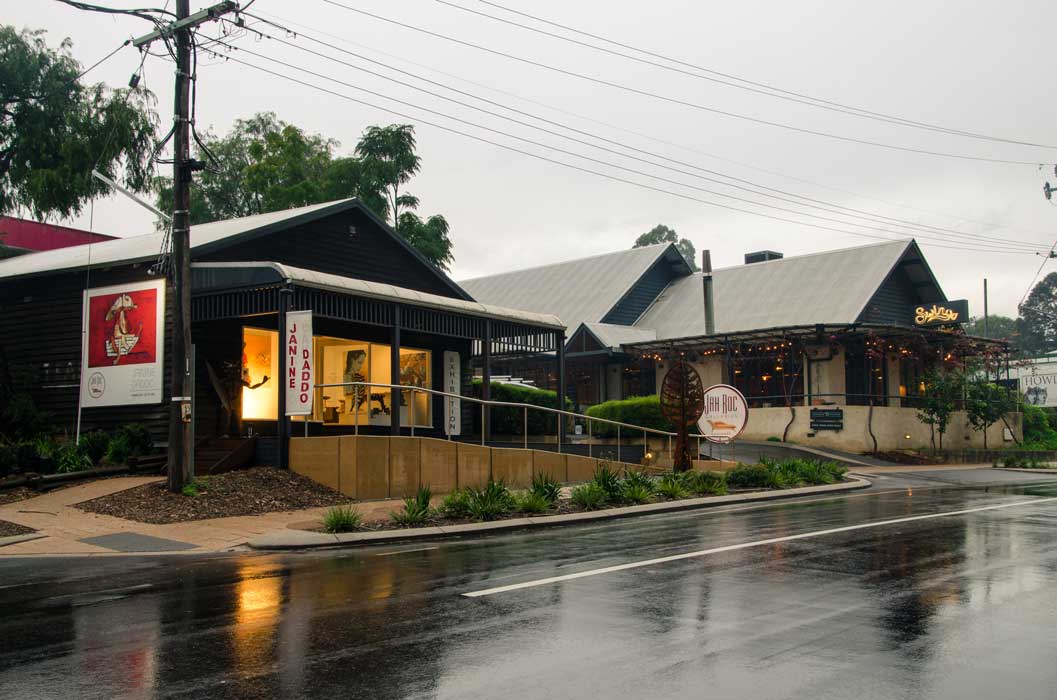
83 Bussell Hwy, Margaret River
The International Trading Company Store was the third store to be established in the new town of Margaret River, after Peake’s Store and Lamb’s Store (1923). It was built in 1925, next to the old hall on Bussell Highway.
Harold Selbourne was the first proprietor of the store, which sold groceries, hardware and tools. He was followed by Captain Currey and his two sons, Rob and John. In 1928/29 Ian and Malcolm Burns took over the International Trading Co. Store after Currey went bankrupt.
The next proprietor was William (Bill) Lucas who bought the shop and business in 1930, which was then run by his wife and two daughters. Bill Lucas left Margaret River in 1934 and George Fearn took the shop over as a drapery business, followed by Mr Moorhead, who extended the drapery to include exclusive ladies’ clothes.
From about 1941 William Duggan ran an agency for Elder Smith from the building, which operated until Elders relocated to new premises in 1953. Mrs Mary Dunnett bought the building in 1953. The focus of the business then changed to become the ‘Floral tearooms’ run by Mrs Daisy Cullum who leased the shop from Dunnett. As well as running the tearooms, Cullum also sold plants and flowers. Dunnett’s son-in-law Frank Rose then transformed the building back into a store, this time selling furniture.
At the rear of the shop was a hairdressing salon run by Mr Paige Guille. In 1974, after many years of lying vacant, Moondyne Art and Crafts set up shop. From the c1980s the place was operated as the Margaret River Art Gallery, which was originally run by a cooperative of 23 artists.
In December 2002, Jah-Roc established a retail outlet and gallery in the International trading Co Store (fmr). In 2005 a major addition was made with the design and construction of a 200m2 contemporary space that connected the original store with the rear cottage. The rear cottage was renovated to become a manager’s quarters/gallery space. The additions made it possible to not only display furniture, but also art works by wellknown West Australian artists.
As at 2012, the building continues in commercial use as Jah Roc Art and Furniture Gallery
Home of M.C. Davies
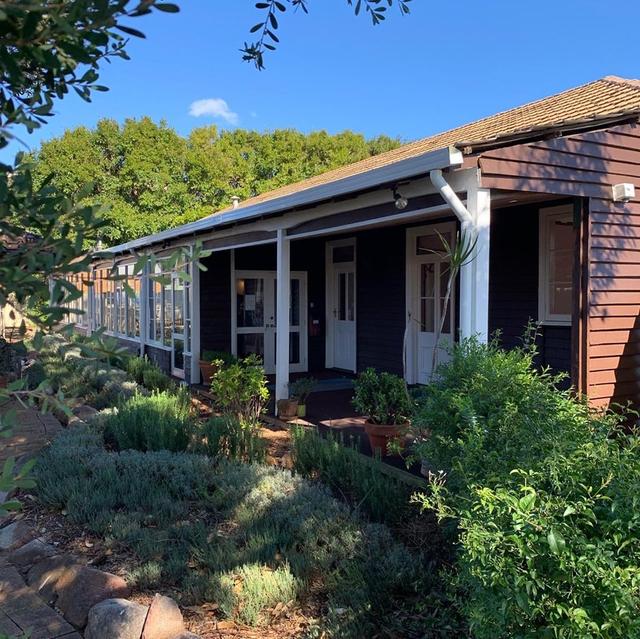
Current location: 18 Farrelly Street, Margaret River
This home was built in 1885 by timber king Maurice Coleman Davies at Karridale. Not only did MC Davies bring roads, rail and safe ports to the region, he exported five of his six sons to open trading offices on each continent (the sixth remained as manager).
Global demand for Margaret River hardwood was booming in the 1880s and Davies, who’d made his money supplying building materials during the gold rush while in South Australia, had the means to get it to market where others had tried and failed. So revered was our jarrah it was used to pave the streets of London and Paris!
The building had quite a journey in its 134-year history. In the 1950s the front section was moved to Farrelly St in Margaret River as a convent school and later sold privately. There it remains today as the main building of the Margaret River Motel.
St Margaret's Anglican Church
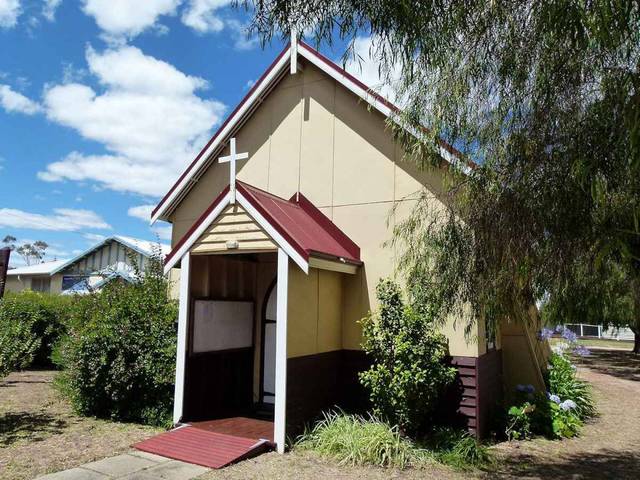
11 Station Road, Margaret River
The new church, rectory and parish hall were built by brothers Arthur & Leslie Mann, and the church was dedicated by Bishop Wilson on 30 January 1927.
Margaret River Railway Station Site
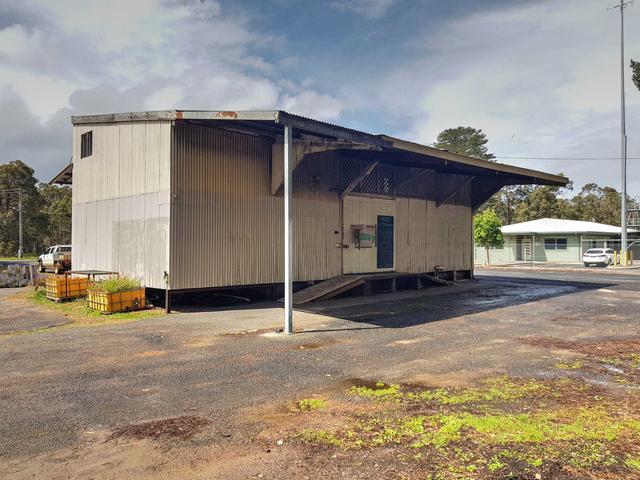
41 Clarke Road, Margaret River
Margaret River was the mid point of a very interesting railway from Busselton to Flinders Bay. The southern end had been built originally for timber pioneer, M C Davies, to transport logs and sawn timber from the forest to his mills, and then to the ports at Hamelin Bay and Flinders Bay. This timber tramway was progressively extended north to the Margaret River and logging spurs transported logs back to the company mills. After the Millars Karri & Jarrah Co. purchased the whole operation in 1902 the forest was gradually cut out and the last mill closed in 1913.
The railway was purchased by the state government for £31,000 and the sale was completed on 1 June 1916 (PWD Annual Report 1916). The government planned to use this old railway to link up with a new line from Busselton to Margaret River. Construction had commenced from Busselton early in 1917 but it was only to fell trees along the proposed route. About 29kms of clearing was done before the work was stopped. Unfortunately, as was the case for several other railway construction projects in the state at this time, World War One intervened – with a shortage of both labour and steel rails for these projects . All rails came from overseas in those days and all steel production was going into the war effort.
The government finalised another clearing tender in October 1920 and work began again to fell the remaining trees to Margaret River. At the southern end, the old timber company track was used for much of the route, but with some deviations. One of these commenced about 2km north of Witchcliffe. The old line went further to the east of Margaret River townsite, following Darch Road. The new government line went to the west following, in part, an old logging spur line to cross the Margaret River just to the north of the town. This provided for a station site, 1km to the south-west of the town centre.
Construction of the railway was undertaken by the Railway Construction Branch, Public Works Deptartment. They employed ‘day labour’ who built up the formation with shovels and horse drawn scoops, while bridge and culvert builders constructed the crossings over the many watercourses. The PWD commenced the Busselton-Witchcliffe section on 15 July 1922 and Witchcliffe-Flinders Bay in May 1923. Busselton-Witchcliffe was opened by the government railways on 20 October 1924 and the remaining section on 1 April 1925.
A list of State Records Office drawings suggests that most buildings were built about the time of opening the railway. Tenders were called for a wooden station (since relocated off-site) and wooden residence (possibly the house at 278 Railway Terrace) in Margaret River in September October 1926, and the first Station Master was appointed at the beginning of the next year.
The WA Government Railway between Busselton and Flinders Bay was closed on 1 July 1957. The station offices and freight depot were retained for use and WAGR operated road transport to replace the train service. Passenger buses took over the traffic between Flinders Bay and Bunbury/Perth with pickup points along the Bussell Highway.
After the railway closed, the WAGR decided to retain a station officer at Margaret River for dealing with road services. Frank McCann had been Assistant Station Master, Margaret River since November 1952 and was appointed to this new role. He was the only WAGR station officer at a station with no rail service. On 1 July 1982 he was appointed Station Master, Busselton and retired from that position in July 1984.
Sometime before 1993, the station building was purchased and moved to the Whistlestop Park at Yoongarillup (south east of Busselton on the Vasse Highway), a local tourist attraction featuring a wildlife park and a miniature railway that took patrons around the park. The six railway worker’s houses were demolished and, as at 2012, the Montessori School is located that portion of the original railway site (north of Betts Street). The crane was relocated to the Northampton (or Walkaway?) Museum.
The former Station Master’s House is located opposite the main railway reserve, at 278 Railway Terrace. This is now a private residence.
Basildene Farmhouse
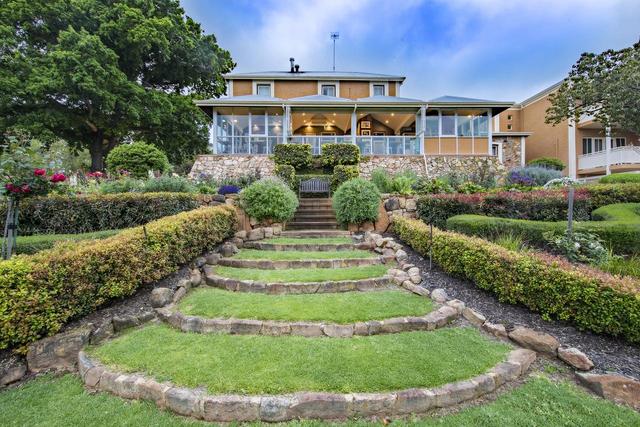
11 Station Road, Margaret River
Basildene Farmhouse was built in 1912 by William Henry Percival Willmott, who was commonly known as Percy. Willmott became the first Head Lightkeeper of Cape Leeuwin Lighthouse when it was completed in 1895 and spent fourteen years in that capacity, residing with his wife and growing family in one of the lighthouse cottages, before taking up land at Margaret River.
Sussex Location 632 on Yalgardup Brook was originally surveyed in December 1908 for T.E. Higgins who initially took up the land under Conditional Purchase Lease 18736/55.
Records cannot be located detailing the transfer of this lease to Willmott, but this probably took place about 1910 when he reputedly moved onto the property. The family are said to have lived in a shack made from flattened kerosene tins while they cleared the land and decided where to build.
In 1911, the family sailed for England where they spent twelve months holidaying and visiting relatives. It was during this period that Willmott is thought to have designed the house he planned to build on his Margaret River land. The design was based on a relative's property near Reading called 'Basildon'.
On his return to Western Australia, Willmott engaged Yallingup builder Robert Donald to construct his house, a two-storey edifice with four rooms upstairs and four downstairs. It was built of local stone and locally milled jarrah and karri timber with a jarrah staircase leading to the upper rooms. The large central hallway occupying a two-storey space in the centre of the building was a distinctive feature of the design.
Percy Willmott died in February 1920. Willmott's descendants continued to live there and farm the property, which eventually passed into the hands of his grandson, Ross Willmott, in 1972.
The house was classified by the National Trust in 1978.
In 1984, Basildene Farmhouse was sold for $850 000 to Amberwave Pty Ltd, a subsidiary of the Colonial Development Corporation. This company announced plans for restoration of the building, which was to be converted to a BYO restaurant and holiday accommodation. In 1991, Basildene Farmhouse was purchased by Ron and Kay Macfarlane who commenced renovations which were completed in 1992. The main changes made to the building at that time were the addition of ensuites to each guest room.
In 1997 the place was added into the HCWA Register of Heritage Places. A ‘Heritage Wing’ was later added featuring Courtyard Suites with enclosed patios, and Balcony/Lakeview Suites with private balconies, overlooking farmlands, the lake and gardens.
Today Basildene operates as a hotel under the name Basildene Manor.
Keenan's Number 1 Mill
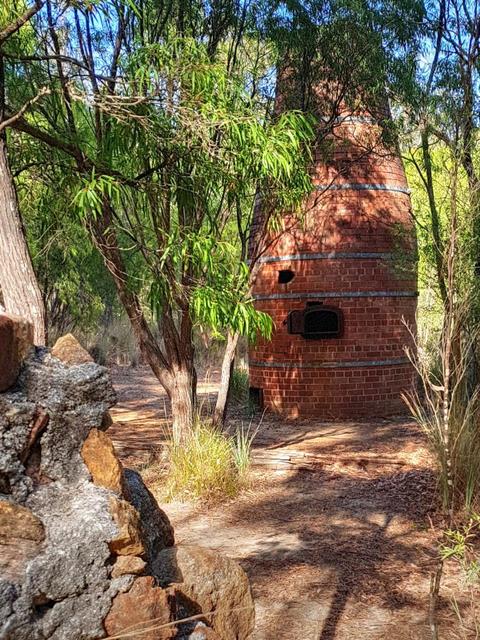
Wooditjup National Park

If you take a stroll along the Chimney Walk Trail in the Wooditjup National Park, you will be sure to come across an enormous curved chimney. The chimney was part of Keenans No 1 Mill, the first pine sawmill in Margaret River. The Keenans No1 Mill was built in 1961 by Aub McEvoy who worked for the Forests Department.
The chimney was used to burn off saw dust and off cuts from the timbers.
